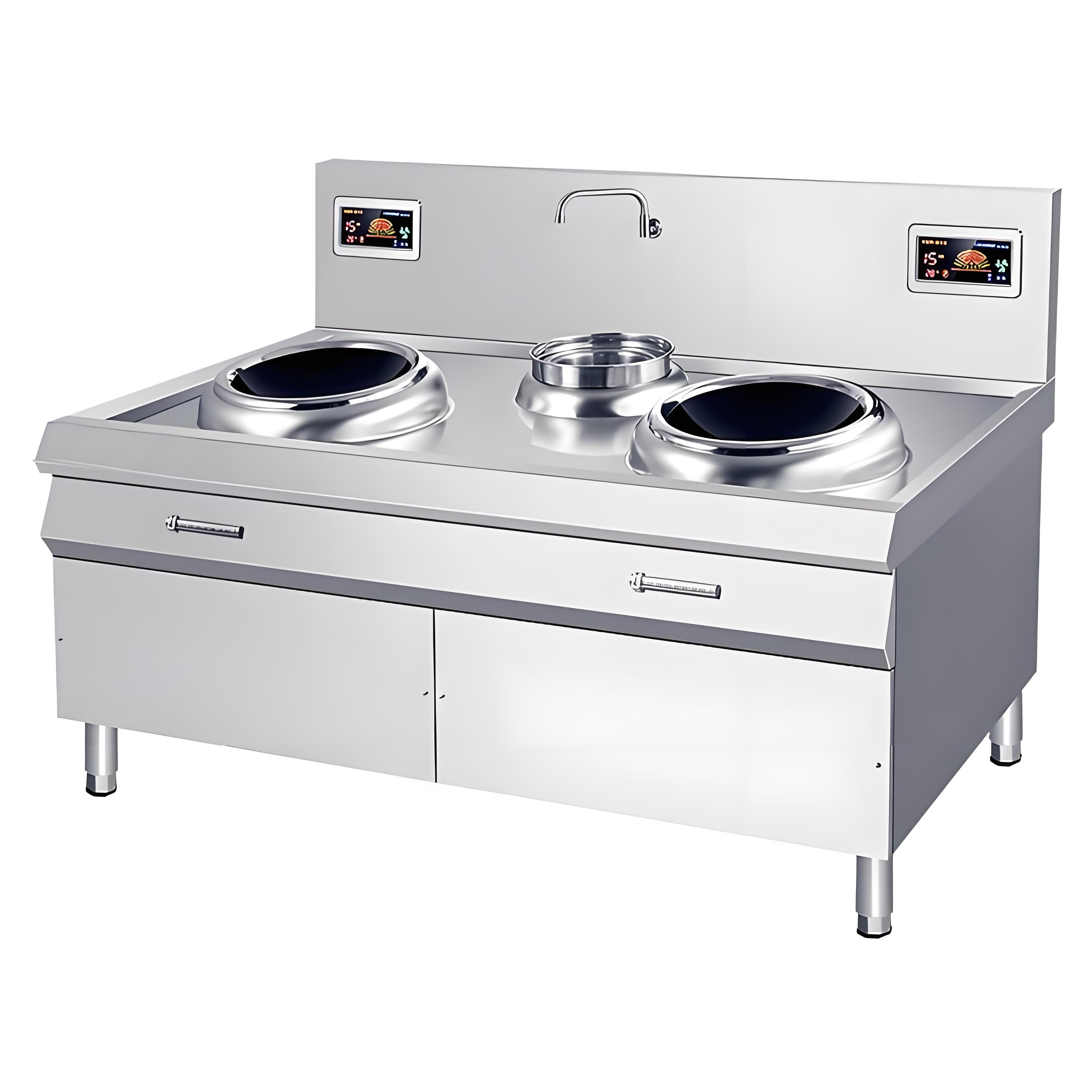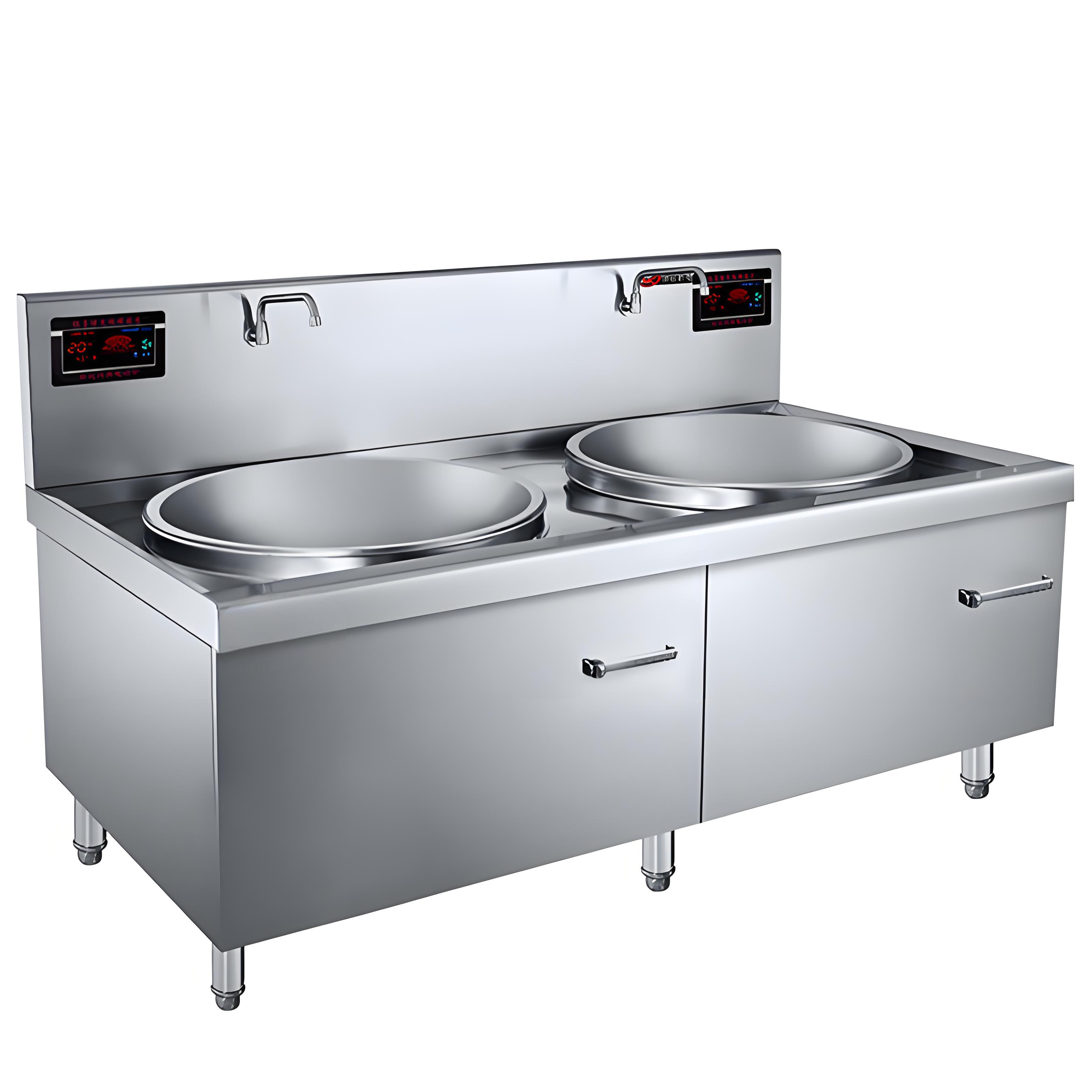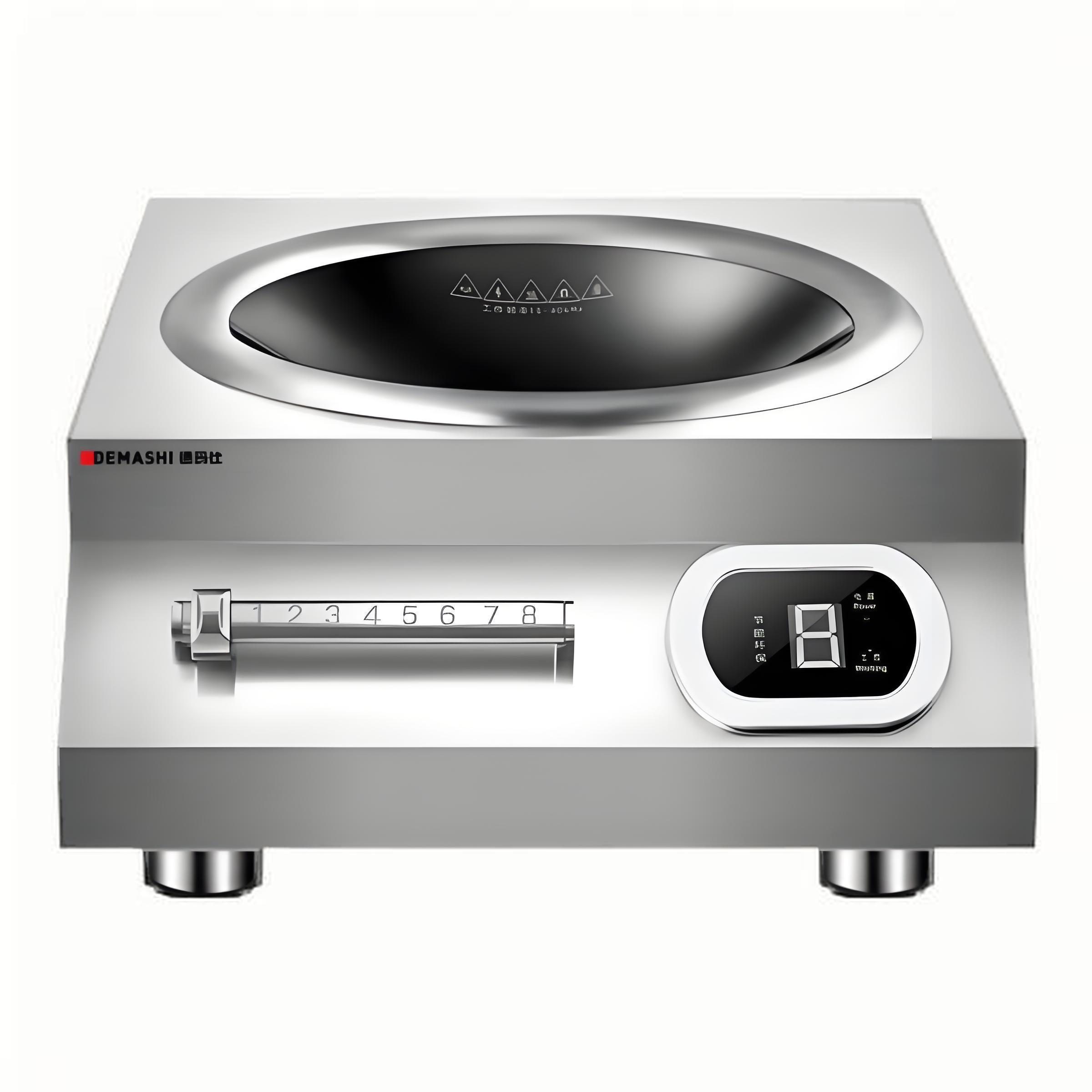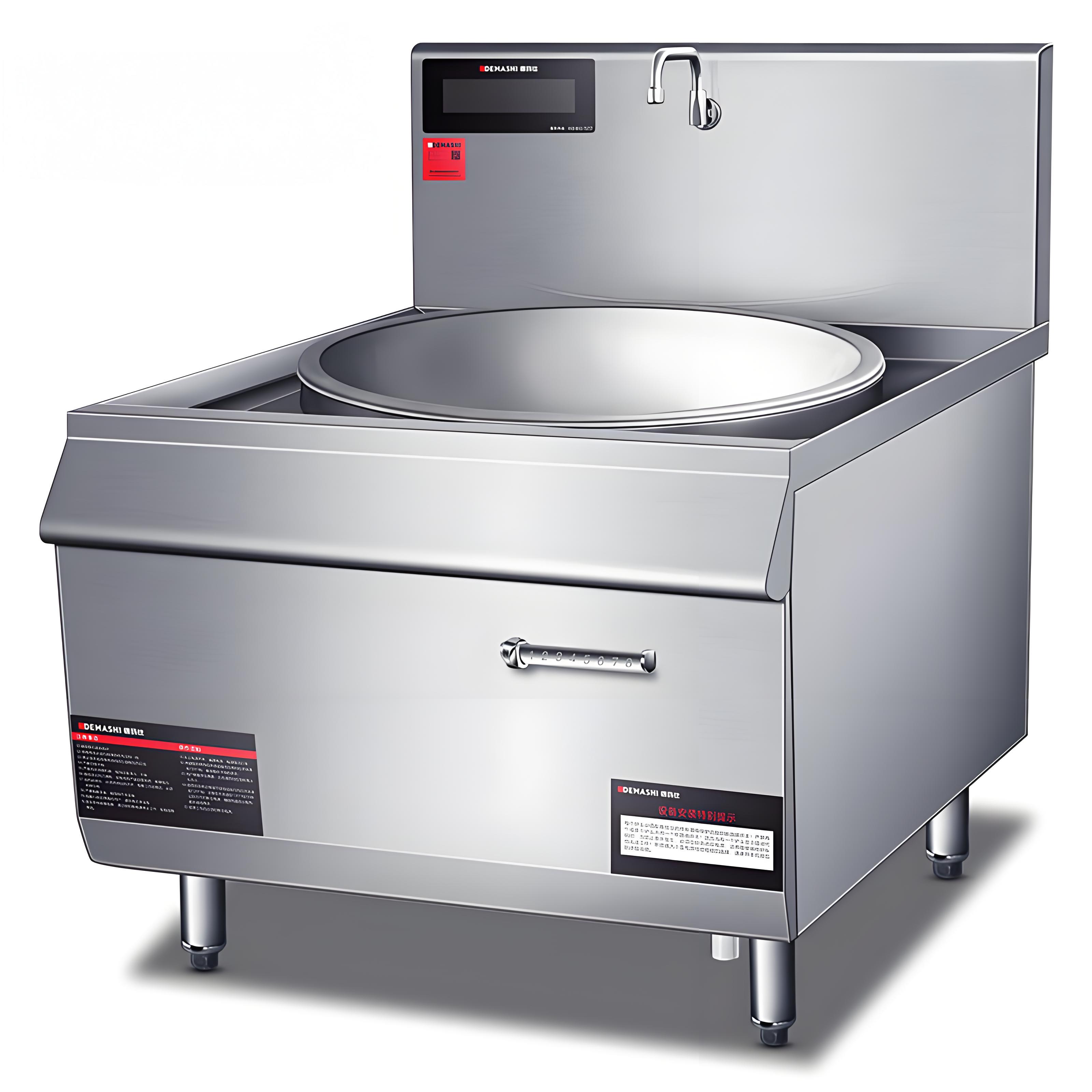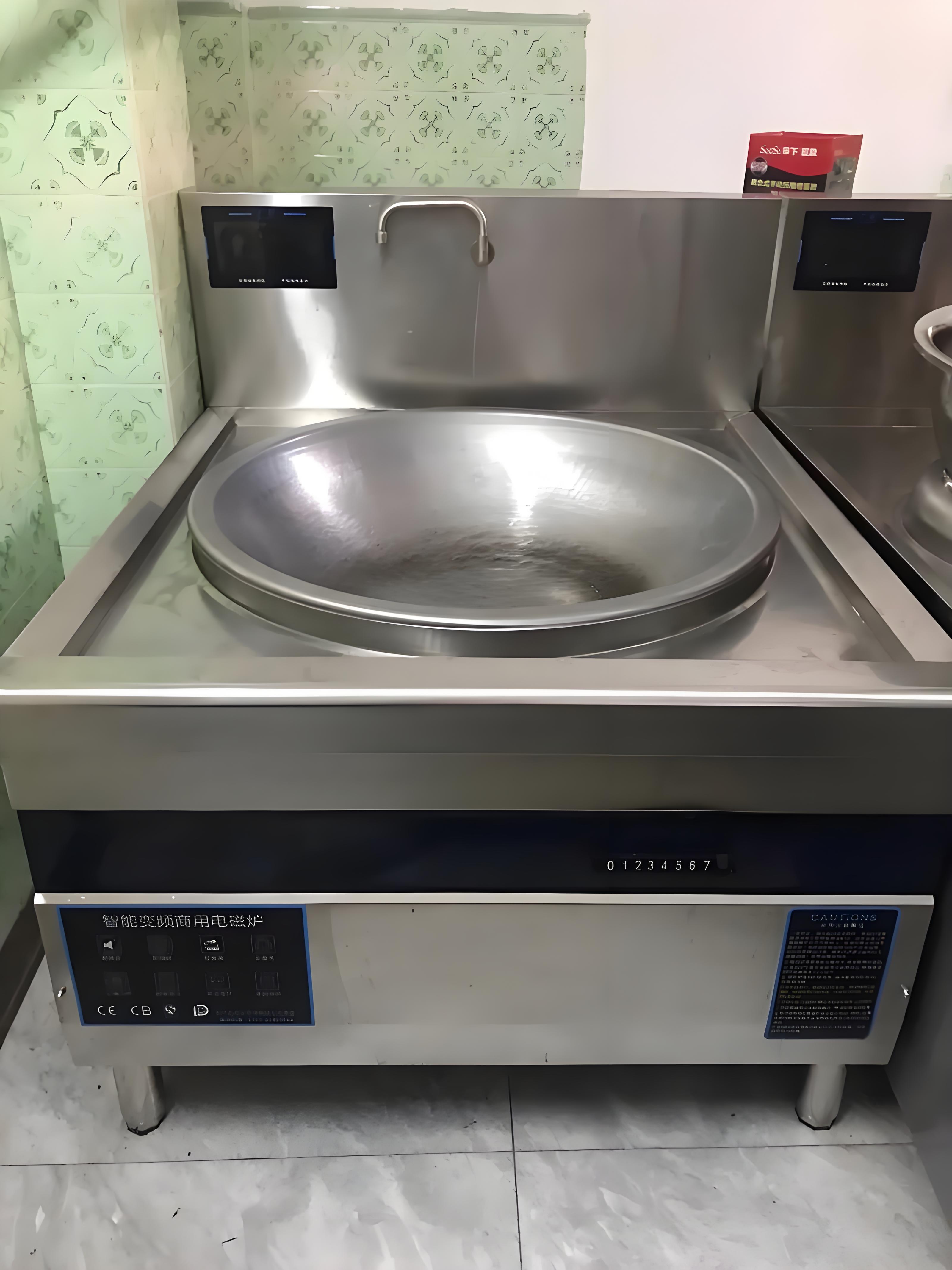As a veteran who’s navigated the currents of the catering equipment industry for over two decades, I’ve witnessed the evolution of kitchen tools firsthand. I understand that the kitchen, for any restaurateur, is where dreams take root, and where efficiency and quality battle it out. Lately, I’ve noticed a recurring question in my inquiries: “Can commercial high-power induction cooktops truly handle stir-frying?“

This seemingly simple question actually touches on a core pain point in commercial kitchen equipment selection. Throughout my career, I’ve interacted with countless restaurant owners and head chefs, and their considerations for kitchen equipment always revolve around a few key aspects: efficiency, cost, safety, food quality, and ease of use. Induction cooktops, as a “fresh face” in the kitchen equipment sector, have certainly garnered attention due to their unique advantages. But can they fully replace traditional gas ranges, especially when it comes to the highly demanding art of stir-frying? Today, I’ll leverage my years of experience to break it all down for you.
Why the Growing Interest in Induction Cooktops?
Before we delve into the stir-frying capabilities of induction cooktops, let’s first understand why more and more catering businesses are turning their attention to them. This trend is driven by the evolving needs of the F&B industry and the inevitable march of technological progress.
1. The Big Picture: Environmental Protection and Safety:
Society’s demands for environmental protection are escalating, and national regulations on catering fume emissions are becoming increasingly stringent. Traditional gas ranges produce significant waste gases during operation, whereas induction cooktops boast zero emissions, drastically reducing kitchen air pollution. Furthermore, the inherent risks of open flames, such as gas leaks and fire hazards, deter many operators. The flameless nature of induction cooktops undoubtedly adds a crucial layer of safety to the kitchen.
2. Energy Cost Considerations:
Induction cooktops have a significantly higher energy conversion efficiency than gas ranges. In my experience, induction cooktops generally achieve over 90% energy conversion efficiency, while gas ranges typically hover around 40-50%. This means that for the same heat output, induction cooktops can save considerably more on energy costs. For catering businesses, these accumulated savings can add up to a substantial amount.
3. The Need for Precise Temperature Control:
Chinese cuisine emphasizes “wok hei” (wok breath/essence), but traditional gas ranges often offer rather crude heat adjustment. Induction cooktops, however, allow for much more precise heat level adjustments, even enabling exact temperature control. This is a huge advantage for dishes that demand very specific temperatures, like molecular gastronomy or sous vide cooking.
4. Improving the Chef’s Work Environment:
Imagine working in a hot and humid kitchen during summer, facing the blazing flames of a stove. The intensity of a chef’s work in such conditions is considerable. Induction cooktops generate no waste heat, significantly lowering the ambient temperature in the kitchen, providing chefs with a relatively more comfortable work environment. This plays a positive role in both improving chef productivity and retaining talent.
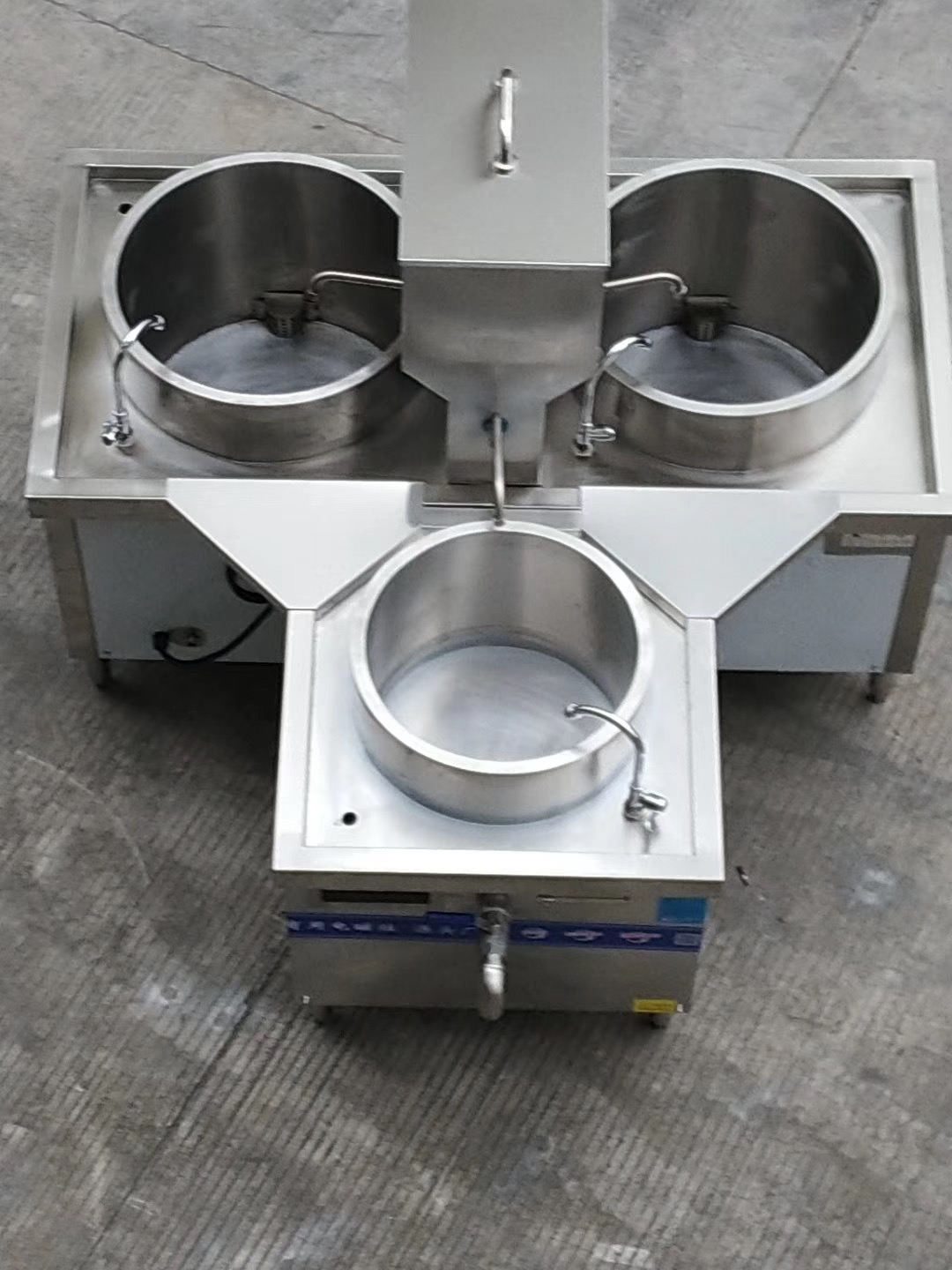
How High-Power Induction Cooktops Work: The Difference from Gas Ranges
To understand if an induction cooktop can stir-fry, we need to grasp its fundamental workings. Induction cooktops operate on a completely different principle than gas ranges.
Simply put, an induction cooktop converts electrical energy into heat through electromagnetic induction. Inside, there’s a coil that generates an alternating magnetic field when current passes through it. When an iron-based pot or pan is placed on the surface, the metal at the bottom of the cookware generates eddy currents under the influence of this magnetic field. These eddy currents, flowing within the cookware, produce heat due to electrical resistance, directly heating the cookware itself.
A gas range, on the other hand, burns natural gas or LPG to produce a flame, which then directly heats the bottom of the cookware.
The biggest difference between the two is that induction cooktops provide “self-heating cookware,” while gas ranges offer “external heating.” This fundamental distinction determines their different characteristics during stir-frying.
The Art of Stir-Frying and the Challenges for Induction Cooktops
Stir-frying, as one of the core techniques in Chinese cuisine, is all about “wok hei.” “Wok hei” isn’t just simple heat; it’s the magical experience of rapidly bringing the cookware to an extremely high temperature in a short time, causing ingredients to cook instantly, develop a beautiful char, and acquire that unique smoky aroma. It demands immense instantaneous power and rapid heat exchange between the cookware and the ingredients.
So, how do high-power commercial induction cooktops fare when faced with the rigorous test of stir-frying?
1. Instantaneous Power – High Power is Fundamental:
Traditional household induction cooktops, typically around 2000W, often feel underpowered for stir-frying, resulting in dishes that taste “lukewarm” and lack wok hei. But we’re discussing commercial high-power induction cooktops today, which usually range from 8KW to 30KW, or even higher. From my experience, some high-end commercial induction cooktops can even reach over 35KW of instantaneous power, which can rival or even surpass the firepower of some medium-sized gas ranges.
High power means the ability to deliver powerful instantaneous heat, bringing the cookware to high temperatures in a short time. This is the foundation for achieving “wok hei.” Therefore, sufficiently high power is a prerequisite for commercial induction cooktops to be able to stir-fry.
2. Even Heating – Cookware is Key:
Gas range flames directly heat the bottom of the cookware, typically with some heat diffusion. The heating method of an induction cooktop, however, places higher demands on the cookware. If the bottom of the cookware is uneven or the material is inconsistent, localized overheating or uneven heating can occur. This can lead to situations during stir-frying where some ingredients are burnt while others are still undercooked.
Therefore, selecting flat-bottomed, highly magnetic, and uniformly thick professional woks is crucial for stir-frying on commercial induction cooktops. Some woks designed specifically for induction cooktops, with multi-ply bottoms, can effectively address this issue.
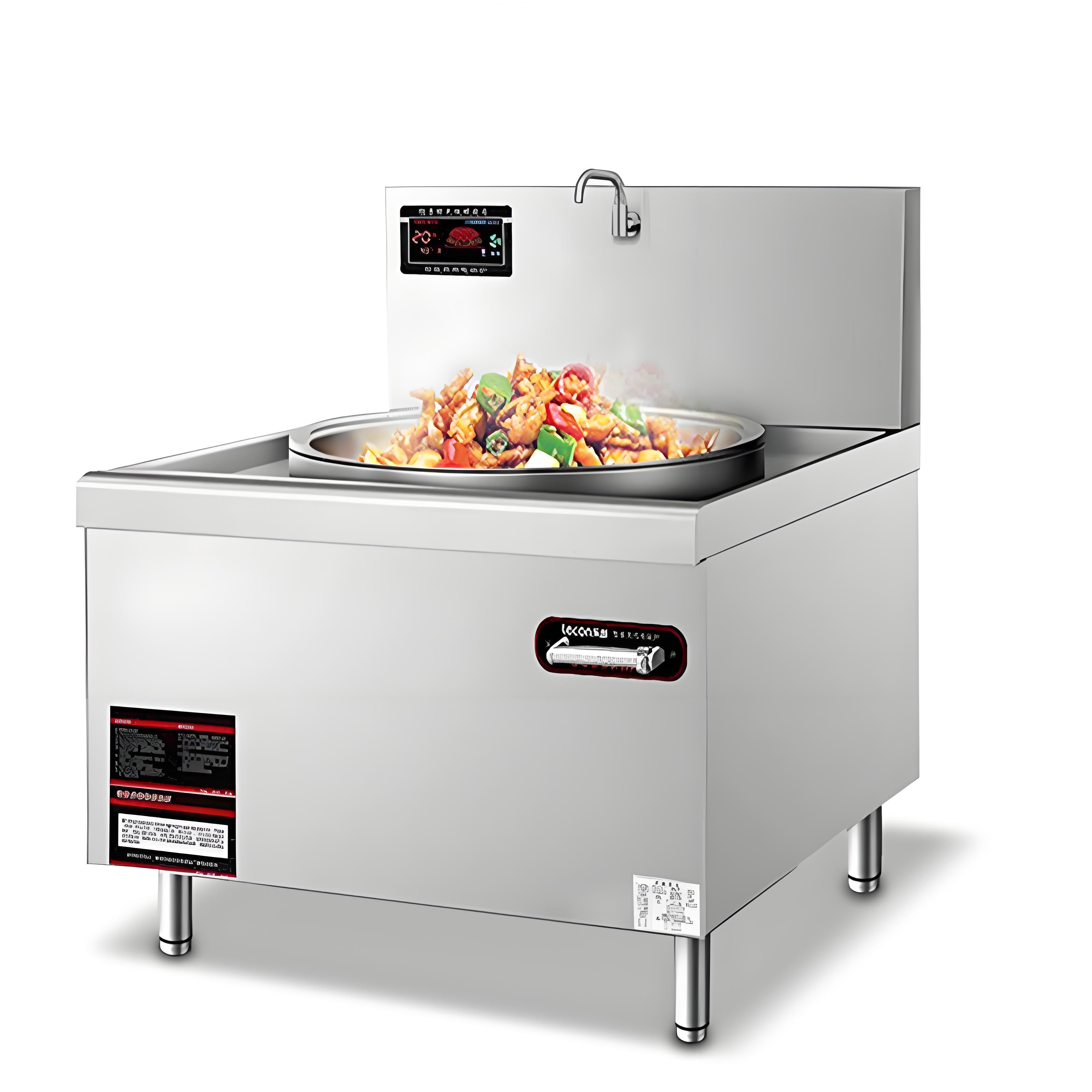
3. The Challenge of Tossing – A Blend of Technique and Equipment:
Traditional Chinese chefs habitually toss the wok frequently when stir-frying. This helps to distribute heat more evenly and allows ingredients to come into full contact with oxygen in the air, accelerating the Maillard reaction and producing that unique charred flavor.
However, induction cooktops rely on the cookware’s contact with the hob to sense and heat. Frequent tossing causes the cookware to lift from the hob, interrupting the induction and causing the heat to diminish or even disappear. This undoubtedly affects the continuity of stir-frying and the formation of wok hei.
To address this issue, some solutions have emerged in the industry:
Wider Induction Range Design: This allows the cookware to maintain induction even with slight movements.
Rapid Heating Recovery Speed: Even if the cookware briefly leaves the hob, it can quickly resume heating within a short time.
Specific Stir-Frying Modes: Some high-end induction cooktops have optimized programs for stir-frying, maintaining a certain heat output even when the cookware is detected leaving the hob, or rapidly returning to the preset heat when the cookware is put back.
Adapting Operating Habits: Chefs can reduce the frequency of tossing or adopt a push-and-pull stir-frying motion to minimize the time the cookware is off the hob.
While fully replicating the tossing experience of a gas range remains a challenge, through optimization of equipment and operating habits, commercial stir-frying needs can largely be met.
4. Dish Adaptability – Not All Dishes Are Equal:
While commercial high-power induction cooktops excel at stir-frying, we must also recognize that not all dishes are ideally suited for them.
Dishes Suitable for Induction Stir-Frying: High-heat stir-fries and quick stir-fries, such as shredded pork with green peppers, twice-cooked pork, and Mapo tofu, benefit greatly from the instantaneous high-temperature burst of an induction cooktop. Stewing and simmering dishes, which require sustained constant temperatures, also leverage the precise temperature control of induction cooktops.
Dishes Less Suitable for Induction Stir-Frying: Dishes that demand extreme “wok hei” and require prolonged high-heat searing or smoky effects, such as some traditional teppanyaki or certain grilled dishes, will find the open flame advantage of gas ranges more pronounced. Furthermore, some dishes that require slow simmering over low heat and are extremely sensitive to temperature fluctuations may need more precise adjustments on an induction cooktop.
In summary, commercial high-power induction cooktops are perfectly capable of stir-frying, and they perform exceptionally well in many aspects. However, whether they can completely replace gas ranges depends on the specific cooking requirements of the dish, the chef’s operating habits, and the performance of the chosen equipment.
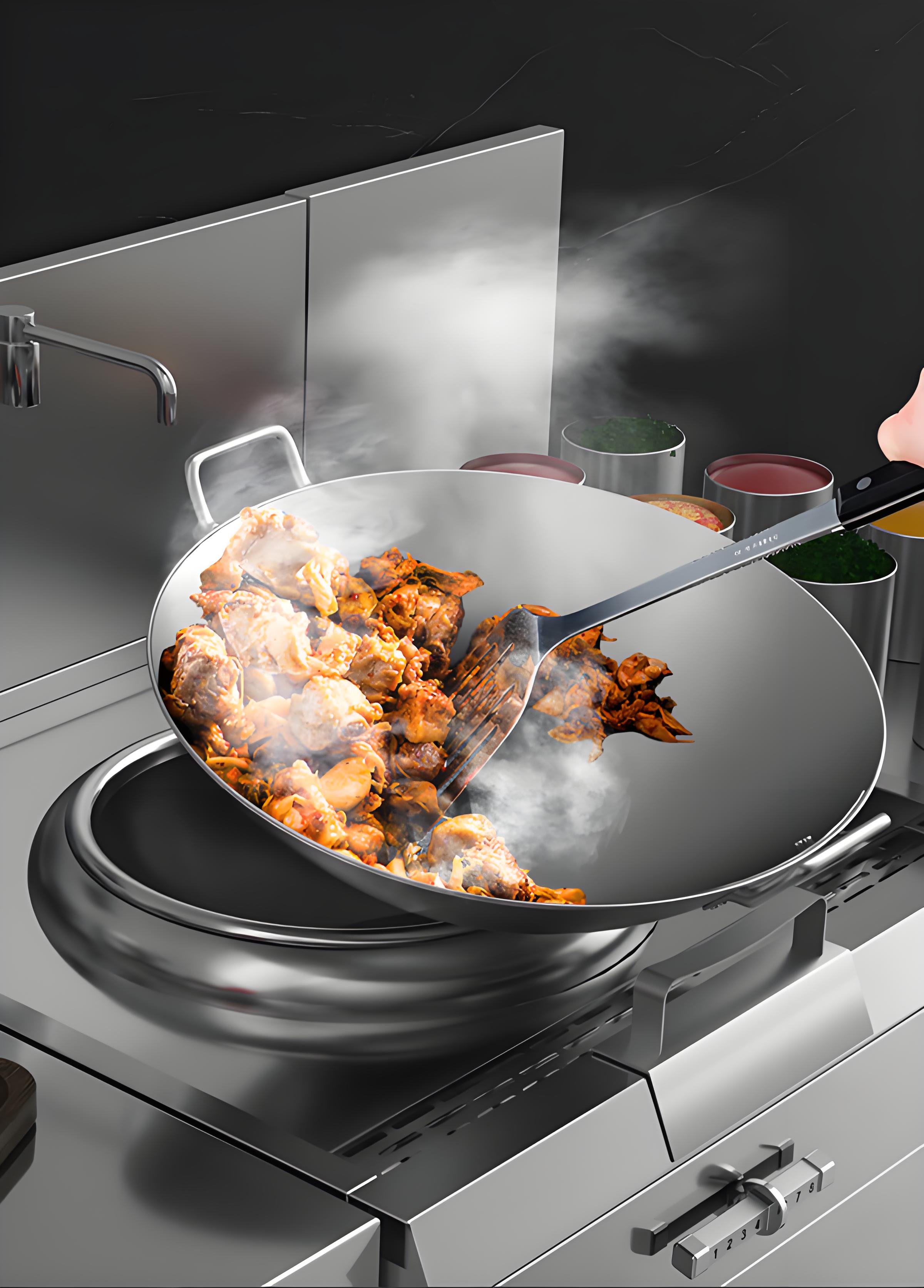
Buying a Commercial High-Power Induction Cooktop: The “Pitfalls” and “Treasures”
Since commercial high-power induction cooktops can stir-fry, how do you navigate the bewildering market to choose a truly effective, durable, and suitable piece of equipment? There’s definitely an art to it.
1. Power is Key, But Not the Only Factor:
As mentioned, high power is the foundation for stir-frying. Generally, for a single-hob wok range, I recommend choosing 15KW or more; for double or multi-hob wok ranges, you’ll need to stack power based on actual needs. But more power isn’t always better. Excessively high power can mean higher energy consumption and greater demands on your electrical grid. You need to assess your restaurant’s menu structure, number of chefs, and daily output to make a comprehensive evaluation.
2. Induction Coil and Hob Material:
These are the core components of an induction cooktop. High-quality induction coils provide more uniform and efficient heating. The hob material directly impacts durability and cleanliness. Microcrystalline glass is a popular choice, known for its high-temperature resistance, wear resistance, and ease of cleaning. When buying, pay attention to the thickness of the hob; thicker usually means more durable.
3. Control System and Power Levels:
A good control system provides more precise and stable heat output. Multiple power level adjustments, one-touch stir-fry modes, and timer functions are important considerations for improving operational convenience and cooking precision. Some high-end induction cooktops even feature intelligent sensing functions that automatically adjust heat based on cookware movement, which is incredibly useful for stir-frying.
4. Cooling System and Safety Protection:
High-power induction cooktops generate significant heat during operation, so an excellent cooling system is crucial for ensuring stable operation and extending the equipment’s lifespan. Built-in high-power fans and rational airflow design are essential. Additionally, safety features like over-temperature protection, over-voltage protection, and empty-pot protection are indispensable. These automatically cut off power in case of accidents, ensuring the safety of operators and the equipment.
5. Brand and After-Sales Service:
This is often repeated, but it’s paramount. Choosing a reputable and strong brand means better product quality assurance and more comprehensive after-sales service. Commercial equipment is different from household appliances; if it breaks down, the losses from downtime can be enormous. Therefore, responsive and professional maintenance services are crucial for ensuring the restaurant’s normal operation.

6. Compatible Cookware:
While induction cooktops theoretically work with all magnetic cookware, to maximize their performance, I strongly recommend choosing woks specifically designed for commercial induction cooktops. These woks typically feature multi-ply bottoms, are flat, and have strong magnetic properties, ensuring even heating and improving stir-frying results.
For a more direct comparison, I’ve created a simple table to help you better understand the characteristics of commercial high-power induction cooktops:
From this comparison, it’s clear that commercial high-power induction cooktops offer distinct advantages in environmental protection, safety, energy efficiency, and improving the chef’s work environment. Although the initial investment might be higher, considering long-term operating costs and potential benefits, it’s undoubtedly a worthwhile investment.
The “Dialectic” of Kitchen Equipment Selection
In my professional life, I’ve seen many successful catering businesses, and also some that took detours. I’ve found that successful restaurateurs, when choosing kitchen equipment, don’t blindly chase the “newest” or “most expensive.” Instead, they follow a “dialectic”: flexibly combining equipment based on their actual needs, leveraging strengths, and mitigating weaknesses.
1. Menu Structure Consideration:
If your restaurant specializes in high-heat stir-fries and quick stir-fries that demand extreme “wok hei,” then you might consider equipping some high-power induction wok ranges, complemented by a few traditional gas wok ranges. This way, you can leverage the efficiency and environmental benefits of induction while still meeting the “wok hei” demands of special dishes. If your restaurant primarily focuses on stewing, simmering, and steaming dishes, then the advantages of induction cooktops will be even more pronounced.
2. Chef Team Habits:
Some experienced veteran chefs, who have used gas ranges for decades, might need time to adapt to induction cooktops. In such cases, a gradual transition can be considered, introducing induction cooktops in some workstations first, allowing chefs to gradually familiarize themselves with and adapt to them. Concurrently, internal training can be provided on the operational characteristics of induction cooktops to help chefs master new cooking techniques.
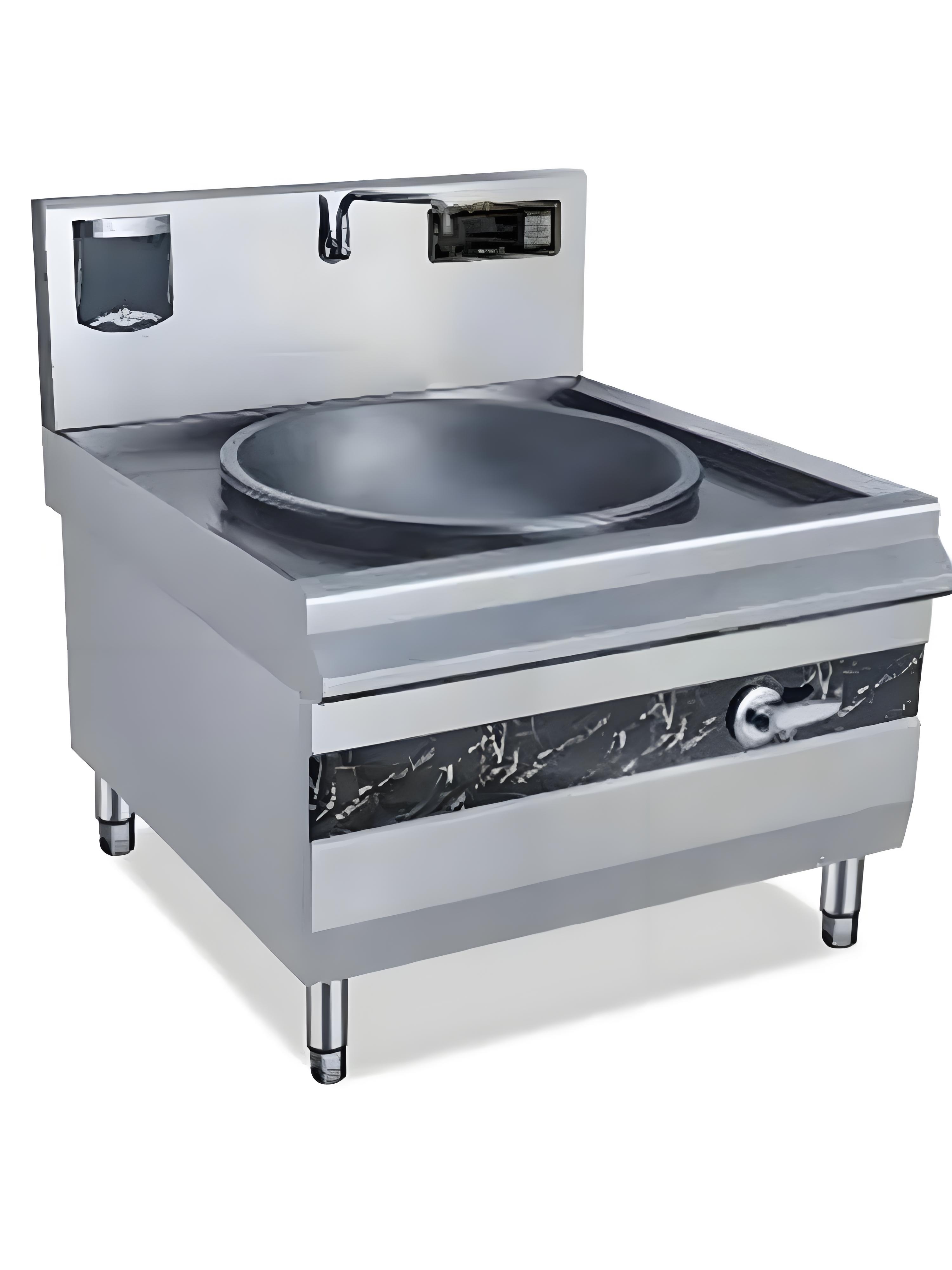
3. Kitchen Layout and Electrical Capacity:
Induction cooktops have higher electricity demands. When selecting equipment, you need to assess whether your kitchen’s electrical capacity can meet the requirements beforehand. Also, a well-planned kitchen layout can better maximize equipment efficiency.
4. Budget vs. Long-Term Benefits:
Initial investment is an important consideration, but you should focus more on the long-term operating costs of the equipment, including energy consumption, maintenance costs, and failure rates. Sometimes, seemingly expensive equipment can actually bring greater economic benefits in the long run.
For example, I once assisted a chain fast-food brand with a kitchen upgrade. They previously used only gas ranges, which resulted in high operating costs and a poor kitchen environment. After our analysis, we found that their menu primarily consisted of standardized fried rice and rice bowls, where extreme wok hei wasn’t a critical requirement. Ultimately, we designed a solution for them that predominantly featured high-power induction wok ranges, supplemented by a small number of gas ranges. In less than a year, they saved nearly 30% on energy costs, while their kitchen environment significantly improved, and chef turnover noticeably decreased. This case clearly illustrates that choosing the right equipment is key to achieving a win-win in both efficiency and profitability.
Conclusion and Outlook
Returning to the initial question: “Can commercial high-power induction cooktops handle stir-frying?” My answer is: Absolutely, and they perform exceptionally well in many aspects. With continuous technological advancements, the performance of high-power induction cooktops is increasingly approaching or even surpassing that of traditional gas ranges. Their advantages in environmental protection, safety, energy efficiency, and improving the chef’s work environment make them an ideal choice for modern commercial kitchens.
However, no single piece of equipment is perfect. When making your choice, you need to consider your specific circumstances, comprehensively weighing menu structure, chef habits, kitchen conditions, and long-term benefits. Perhaps the ideal kitchen of the future will be a “hybrid” of induction and gas ranges, complementing each other, leveraging their respective strengths, and together creating an efficient, safe, environmentally friendly, and delicious cooking space.
I firmly believe that in the future of the F&B industry, intelligence, environmental friendliness, and efficiency will be irreversible trends. And commercial high-power induction cooktops are undoubtedly a shining star in this trend, helping more catering businesses stand out in fierce market competition and deliver even more delicious and healthy dishes to diners.
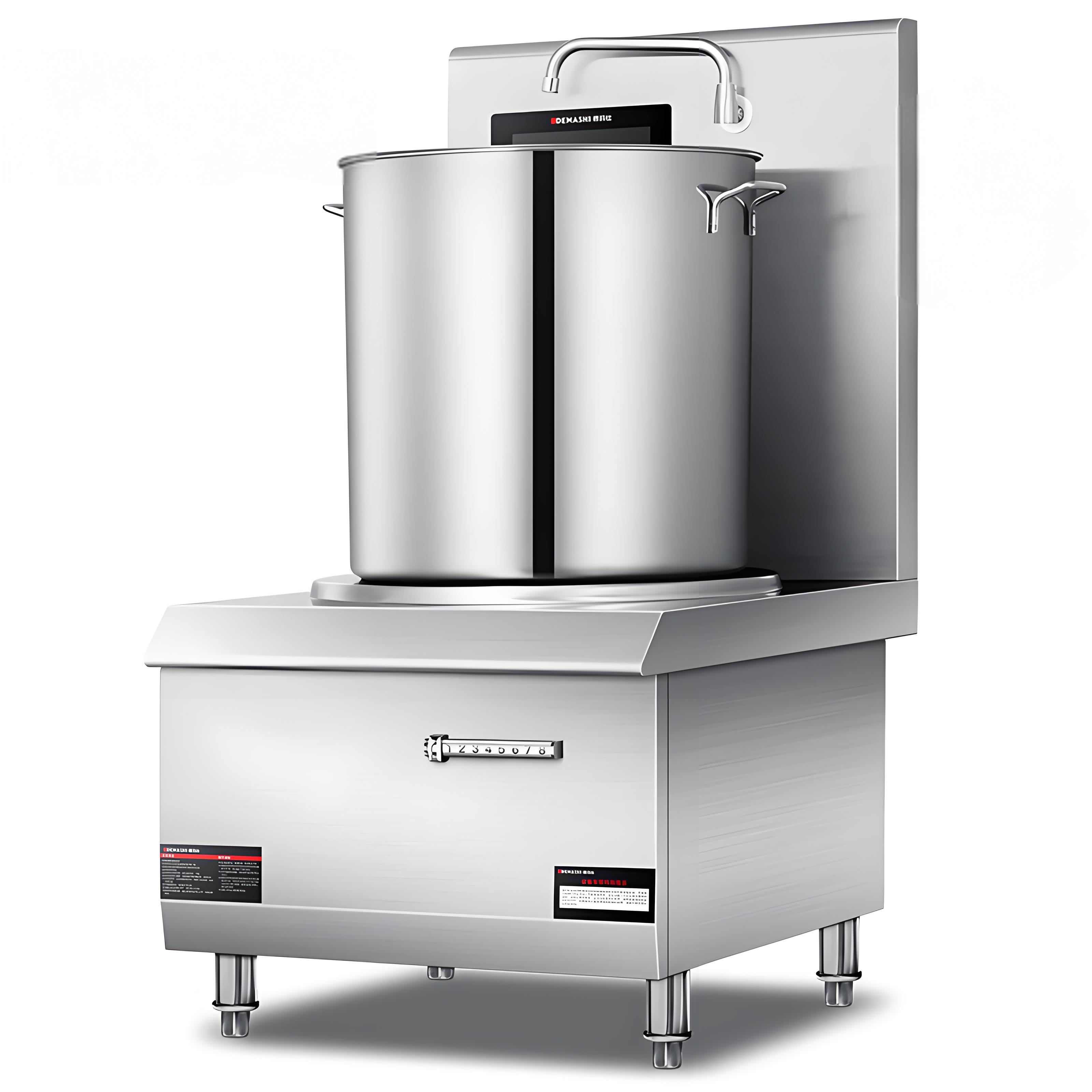
Related Q&A
Q1: Is the noise from commercial induction cooktops loud? Will it affect chefs’ work?
A1: Commercial induction cooktops do produce some fan noise during operation, but it’s usually within an acceptable range, and noise control is improving with technological advancements. Compared to the combustion noise of gas ranges and the noise from range hoods, induction cooktop noise is relatively low and doesn’t significantly affect chefs’ work.
Q2: Induction cooktops require specific cookware materials. Does this mean my old pots can’t be used?
A2: Yes, induction cooktops only work with iron-based or magnetic cookware. If your old pots are made of non-magnetic materials like aluminum, copper, or ceramic, they won’t work on an induction cooktop. However, there are many woks, stockpots, etc., specifically designed for induction cooktops on the market now, primarily with stainless steel composite bottoms or cast iron, offering a wide range of choices.
Q3: Are commercial induction cooktops expensive to repair? What’s their failure rate like?
A3: The internal structure of commercial induction cooktops is more complex than gas ranges, involving electronic components. If a malfunction occurs, repairs do require professional personnel. However, generally speaking, large-brand commercial induction cooktops have a relatively low failure rate under normal use and maintenance. Moreover, when a fault does occur, it often involves replacing modular components, making repairs more efficient. Choosing a brand with comprehensive after-sales service can effectively reduce future maintenance costs and risks.
Q4: I heard that commercial induction cooktops emit radiation. Is it harmful to humans?
A4: Induction cooktops do generate electromagnetic radiation during operation, but their radiation intensity is well below the safe limits specified by national standards and is not harmful to human health. Just like everyday appliances such as microwave ovens and mobile phones, as long as they meet national safety standards, they are safe to use. Furthermore, commercial induction cooktops have even better radiation protection, ensuring a higher level of safety.
Q5: I want to open a small fast-food restaurant with a limited budget. Is a gas range or an induction cooktop more cost-effective?
A5: For a small fast-food restaurant with a limited budget, a comprehensive assessment is needed. If your local gas costs are low and you’re very sensitive to initial investment, a gas range might offer a cost advantage. However, if you consider long-term operating costs (energy consumption), kitchen environment improvement, and environmental requirements, investing in a high-power induction cooktop might be more cost-effective in the long run. I recommend you calculate the long-term operating costs for both options in detail and make a decision based on your restaurant’s menu characteristics and local policies.
